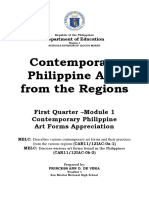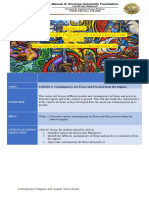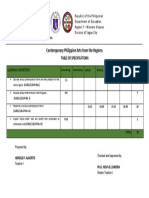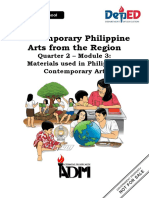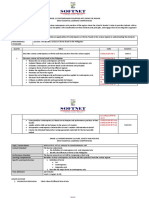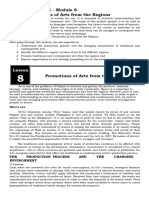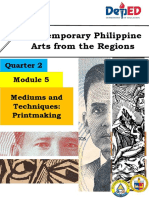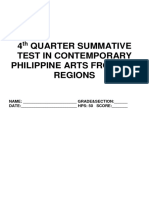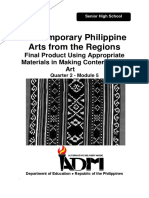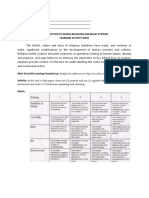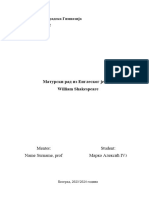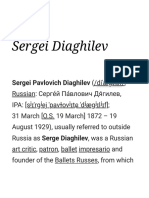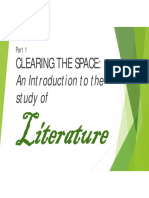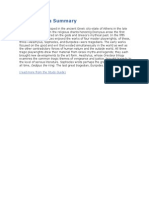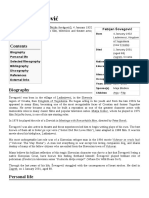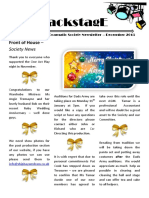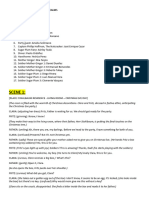100% found this document useful (1 vote)
2K views16 pagesCPAR Week 1 and 2
The document provides information about contemporary art forms in the Philippines. It begins by defining what contemporary art means and notes that contemporary Philippine art is rooted in local culture and traditions. It then lists the major contemporary art forms in the Philippines and says that the lesson will describe these art forms and their practices in different regions of the country. The goal is for students to understand contemporary art and its regional variations in the Philippines.
Uploaded by
Marilyn DizonCopyright
© © All Rights Reserved
We take content rights seriously. If you suspect this is your content, claim it here.
Available Formats
Download as PDF, TXT or read online on Scribd
100% found this document useful (1 vote)
2K views16 pagesCPAR Week 1 and 2
The document provides information about contemporary art forms in the Philippines. It begins by defining what contemporary art means and notes that contemporary Philippine art is rooted in local culture and traditions. It then lists the major contemporary art forms in the Philippines and says that the lesson will describe these art forms and their practices in different regions of the country. The goal is for students to understand contemporary art and its regional variations in the Philippines.
Uploaded by
Marilyn DizonCopyright
© © All Rights Reserved
We take content rights seriously. If you suspect this is your content, claim it here.
Available Formats
Download as PDF, TXT or read online on Scribd
/ 16



